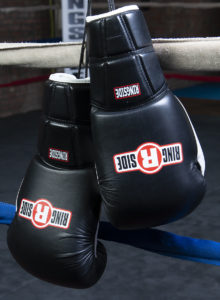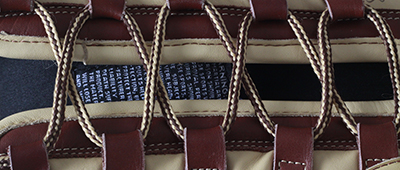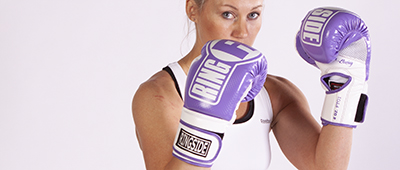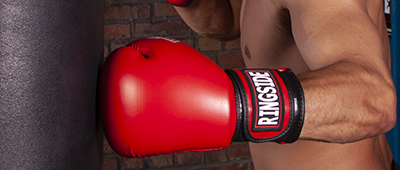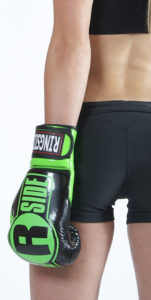You might not be surprised to learn that we are commonly asked about how to choose the best boxing gloves. With so many options, narrowing it down can feel overwhelming.
Do I need a bag glove or a sparring glove? Leather or synthetic? What’s IMF Tech? There are so many things to consider.
And then you have to figure out what size you need to get.
With all these choices facing you, how can you make sure that you’re picking out the right pair of boxing gloves for you?
We’ve put together a guide that will walk you through the seven things you need to understand when choosing your first (or your next) set of boxing gloves.
When it comes to choosing the best boxing gloves, you’ll want to consider the following seven characteristics before making a final decision.
1. Boxing Glove Type
Boxing gloves come in four primary categories: Bag, Sparring, Training, and Competition. To understand which of these options will be the best boxing glove for you, you will need to know what your primary use will be.
Bag Gloves have ample wrist support and significant padding over the knuckles. This provides substantial protection from the constant impact with the heavy bag. They also tend to be lighter than sparring gloves to allow fighters to throw punches for longer than with a heavier sparring glove. If you intend to focus on bag work, need a separate pair of gloves for hitting the bag, or have taken up fitness boxing, you will want Bag Gloves.
Sparring Gloves are built to protect you and your partner while you spar in the ring. Heavier than competition gloves, these gloves also help you to improve punch speed and endurance. If you can only afford one pair of gloves for training, then choose Sparring Gloves. You can always hit the bag with a set of sparring gloves, but you won’t want to spar with bag gloves.
Training Gloves are intended to be an all purpose glove for training. Designed to provide proper protection for both bag work and in-ring sparring, they are a bit of a hybrid between the two glove styles. Some Training Gloves manage this hybridization really well, but not all manufacturers nail this mash-up. If you are just getting into boxing, training gloves are a good option. But you’ll want to do some research on which ones are worth the money.
Competition Gloves are lighter and smaller than gloves used for training. They are built to protect your knuckles and wrists, while allowing you to “feel” the contact. If you intend to compete, you will most likely be required to supply a set of Competition Gloves. Some tournaments, however, will supply these for you.
2. Material
Boxing gloves primarily come in Leather or synthetic material.
Leather Gloves will be more expensive and require more care to maintain. On the other hand, when properly maintained, leather gloves are far more durable than any other material currently in use.
Synthetic Materials, like vinyl, are generally less expensive and easier to maintain. But these types of materials tend to wear out more quickly.
Polyurethane Leather Substitutes are another, less common material for making gloves. This material looks and feels like leather, and provides a similar level of durability, while offering a lower price point and vinyl’s easy maintenance. Gloves that feature a leather substitute are worth checking out if you find them.
If you’re serious about the sport and need a pair of gloves that will withstand a lot of abuse, then leather (or leather substitute) will be your best boxing glove option. If you’re just getting started or you’re primarily focused on boxing fitness, a synthetic material will be a good option.
3. Closure Type
You will need to secure your boxing glove at your wrist to make sure it fits snugly and doesn’t move. The most common closure types are lace up and hook & loop, but there are a few other options as well.
The Lace-up style is the traditional, old-school method of securing a pair of gloves. Many fighters and coaches prefer the lace-up style because they believe it provides a tighter, more secure fit. On the other hand, these gloves take a long time to put on and take off. They will usually also require you to have a second person to properly tie them up.
Hook & Loop closures, often referred to as velcro, have become one of the most common types in boxing gyms today. Hook & loop closures provide a quick, convenient method for getting your gloves on and off and don’t require a second person to secure them. On the downside, it may be harder to fine-tune the fit using this style.
Quick-tie closures marry the convenience of hook & loop with the secure feel of a lace-up. This type of closure can be cinched type by simply pulling on the strings until the glove is secure. The quick-tie system provides a snugger, more fine-tuned fit than hook & loop, while providing a more convenient, faster means of securing the glove than lace-up.
Slip-on gloves feature an elastic cuff or a set of elastic cords to secure the opening of the glove. Typically only beginner gloves or old-school bag gloves are available in a slip-on style.
If you are only going to use your glove for hitting the bag, the hook & loop closure is the best boxing glove option for you. You can get the gloves on quickly, hit the bag, then pull them off just as quickly so you can continue to the rest of your workout.
For competition gloves, the best option is really a matter of personal preference. You and your coach should pick the style that you think is best.
Whatever you decide for competition gloves, you should probably use the same style for your sparring gloves. Best to train with the same type of gear you will be competing in. Unless you will also be doing bag work in your sparring gloves, then it’s best to choose hook & loop or quick tie style sparring gloves.
4. Appearance
You’ll be wearing these gloves for every training session and workout. Just like your shoes and your clothes, the best boxing gloves for you should reflect your sense of style.
We’ve come a long way from the time when the only options were brown, black, and red. Gloves come in a wide range of colors and designs. Choose an option that you’ll enjoy wearing and showing off to others.
5. Size
Competition and sparring gloves sizes are based on the weight of the glove. Sparring gloves are typically offered in sizes from 14 oz to 20 oz, while competition gloves are typically in the 8 oz to 12 oz range.
Bag gloves, for the most part, come in sizes marked small, medium, large, and extra large. The size of the glove you choose will generally scale with your size and strength. Lighter, smaller fighters will opt for lighter gloves, while larger, heavier fighters will need bigger, heavier gloves.
If you check out our the size-chart on our sizing page, it will give you size ranges for all varieties of gloves.
When it comes to bag and sparring gloves, measuring your hand circumference will provide the best metric for determining what size glove you should be selecting. You select competition glove size based on your weight class and the rules of the sanctioning body you fight under.
6. Fit
When you try on a pair of gloves for the first time, it should slide on easily, without a log of force. It should fit snug, but not feel tight. There should be room enough for wraps. There should be no areas that feel pinched or constricted. You should feel minimal resistance when making a fist, and your fingertips should touch the tip of the glove.
7. Bells and Whistles
There are other miscellaneous factors that you might want to consider when choosing the best boxing gloves for you.
Padding type: What type of padding is used to protect your fist. Old-school style gloves, billed as “puncher’s gloves” still use a horsehair fill. Most modern gloves use either molded layered foam or an injected molded foam to provide the exact amount of padding needed for a particular style of glove.
Breathability: Many bag and sparring gloves are made with vented palms to allow air to circulate inside the glove while training. This can cut down on the moisture that builds up inside the glove while sparring or hitting the bag.
Gel layer: Some gloves come with a gel layer that provide an additional layer of protection for the boxer’s hands.
Sport Specific: Gloves are also available in styles that are suited to specific types of combat sports. MMA gloves have open palms, divided fingers, and open fingertips to allow for grappling maneuvers. Muay Thai gloves provide fighters more flexibility in their hands and thumbs to allow fighters to grab or clinch with their opponents.
If you’re ready to buy a set of boxing gloves, head on over to our store and check out our complete collection
If you still have questions about how to choose the best boxing glove for you, feel free to reach out to or customer service team at customerservice@combatbrands.com. We’ll be happy to answer any further questions you might have.


